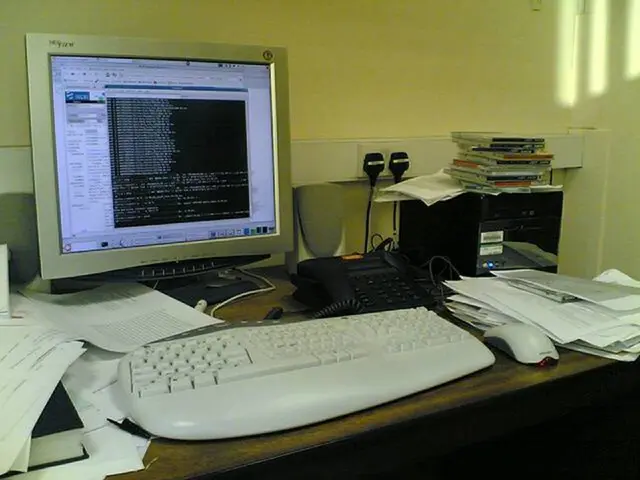Evidence Gaps Highlighted: Insufficient Support for Certain Claims
In the realm of screen diversity, the focus has traditionally been on who appears on screen, with less attention paid to the prominence of these individuals and the portrayal of their characters. However, a new approach is emerging that leverages computer vision to expand the evaluation of on-screen representation beyond mere presence.
This innovative method can track the amount of screen time each individual receives, their positioning, size on screen, and movement dynamics. Advanced video representations like the 2D Gaussian-based method (GSVR) allow for efficient segmentation and tracking of individuals across frames, enabling the quantification of screen prominence and visual focus in a scalable way.
Moreover, computer vision combined with facial expression recognition, pose estimation, and behavioral trajectory analysis allows for an assessment of how characters are portrayed. This includes their emotional tone, agency, and role. Automated identification of nonverbal cues or contextual cues linked to stereotypes or positive/negative portrayal can provide data-driven insights on representation quality.
By addressing data gaps and biases present in existing diversity reports, computer vision can help fill evidence gaps and unveil hidden patterns around minority representation and implicit biases. Current diversity reporting often relies on manual coding or limited metadata, which can introduce bias and inconsistencies or fail to capture granular aspects like portrayal nuances. Computer vision pipelines can automatically process large volumes of broadcast footage rapidly, objectively, and consistently.
Furthermore, domain adaptation techniques can help mitigate dataset biases, increasing robustness and generalizability of analyses. Emerging AI systems for real-time screen analysis demonstrate potential for capturing interface elements and spatial relationships live, which could be adapted to evaluate on-screen diversity, prominence, and portrayal continuously and in real-time across broadcasts.
In summary, leveraging computer vision techniques can transform UK broadcasting diversity assessments by providing more detailed, objective, and scalable measurement of who appears on screen, how prominently, and with what portrayal—thereby addressing critical data gaps and biases inherent in traditional diversity reports. This technological integration promises to support more nuanced and equitable media diversity evaluation.
However, it is important to approach the application of facial technologies responsibly and ethically, as the wider social norms around these issues are still developing. Additionally, there is a lack of data on some underrepresented and minoritized groups, such as sexual orientation and religion and belief. Embracing and building upon new evidence methods, such as computer vision, can help address gaps in the evidence base for representation on screen.
The UK's departure from the EU has changed the way British firms trade and work with European companies, and the creative industries are no exception. The Creative Diversity Network's Project Diamond and Ofcom's annual diversity in television broadcasting reports are two major UK initiatives collecting diversity evidence on screen. The comparatively low percentage of black, Asian, and other minority ethnic characters speaks to the need for more lead roles and ownership of narrative in film.
Worldwide exports of creative goods exceeded 500 billion USD in 2015, with a 150% increase since 2000. It is important to avoid tokenistic representation and portrayal that perpetuates stereotypes in order to foster a more equitable and representative media landscape. Socially-minded AI researchers in the creative industries and elsewhere can play a crucial role in building systems that apply computer vision to the domain responsibly.
- To evaluate the quality of on-screen representation, advanced skills like facial expression recognition, pose estimation, and behavioral trajectory analysis can be combined with computer vision.
- By using the 2D Gaussian-based method (GSVR), individuals' screen time, positioning, size on screen, and movement dynamics can be efficiently quantified.
- The use of computer vision helps fill evidence gaps and uncovers hidden patterns around minority representation and implicit biases in data-driven insights on representation quality.
- In the realm of data and cloud computing, computer vision pipelines can automatically process large volumes of footage rapidly, objectively, and consistently.
- Technology like artificial intelligence for real-time screen analysis can be adapted to evaluate on-screen diversity, prominence, and portrayal continuously and in real-time across broadcasts.
- The UK's creative industries must embrace responsible and ethical application of facial technologies to construct systems that address gaps in the evidence base for representation on screen, particularly for underrepresented groups such as sexual orientation and religion.
- The export of creative goods has significantly increased since 2000, emphasizing the importance of fostering a more equitable and representative media landscape beyond tokenistic representation and perpetuating stereotypes.







